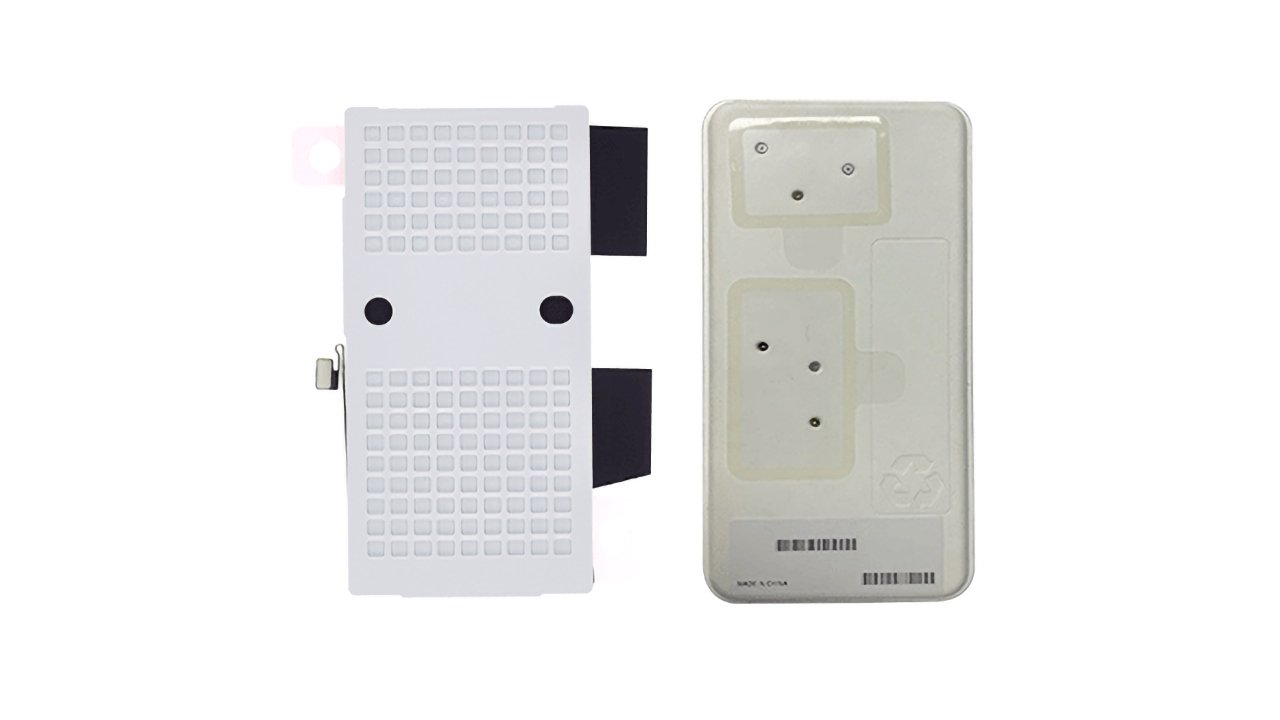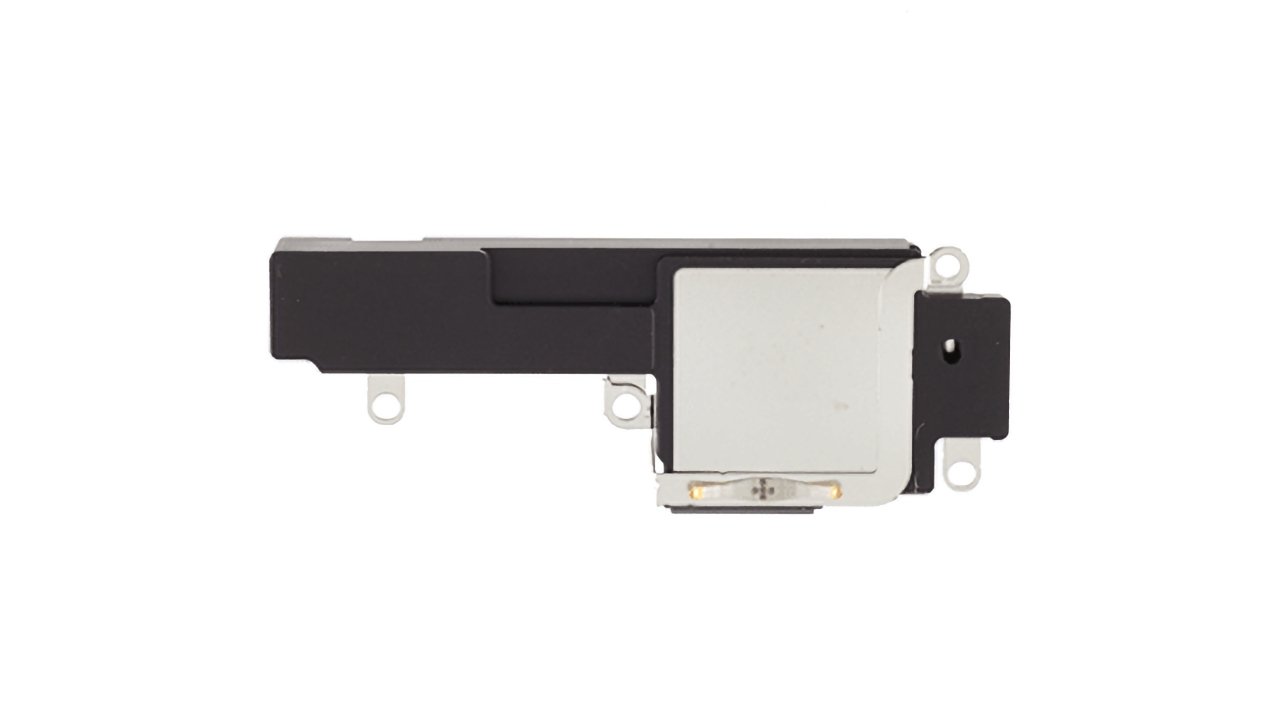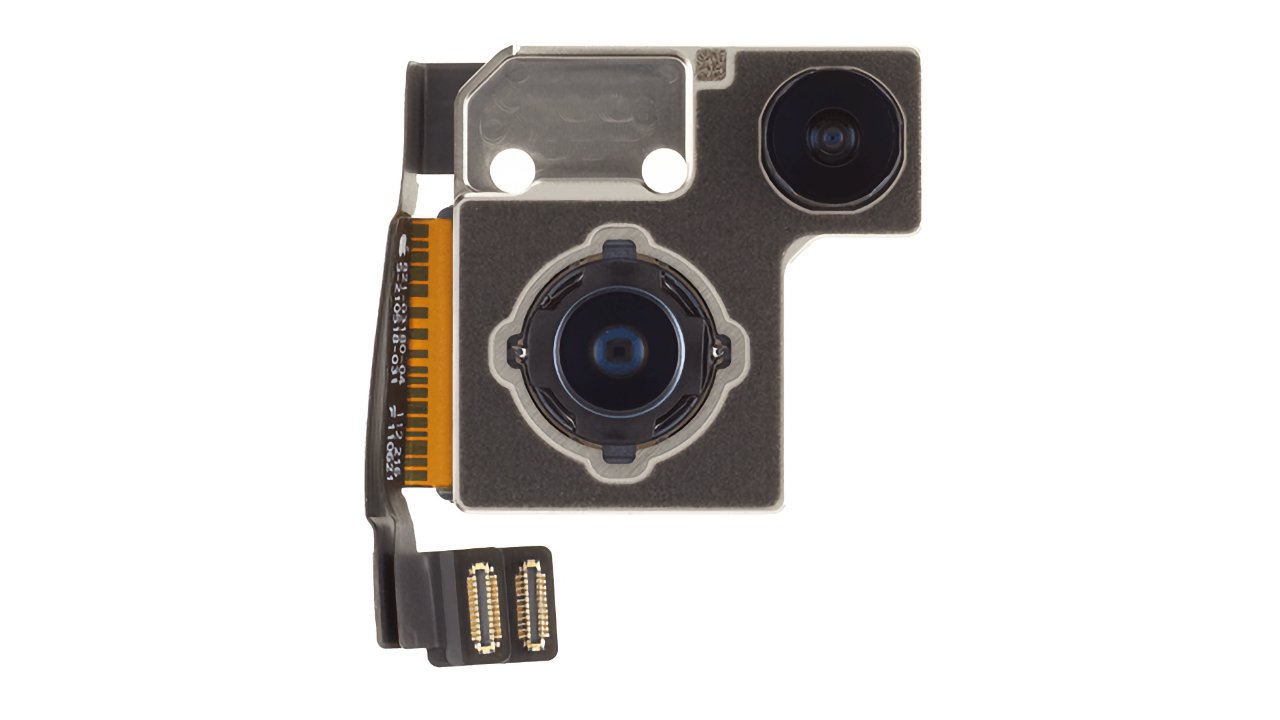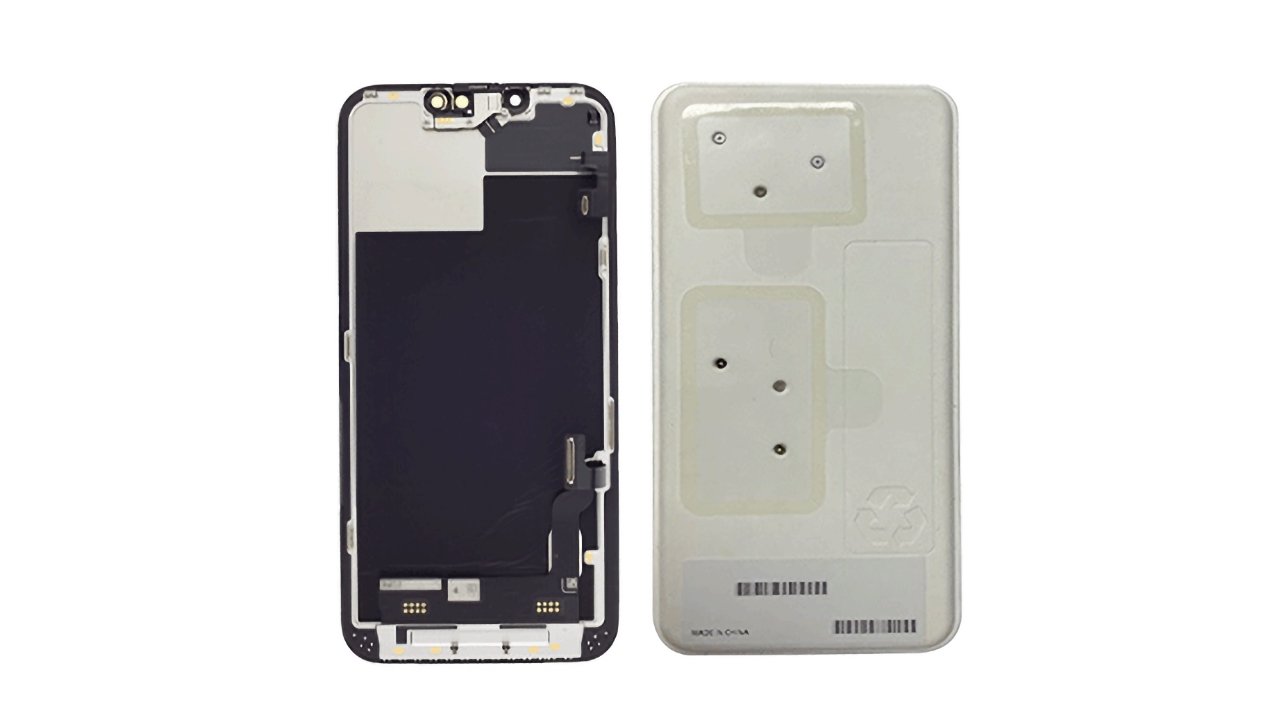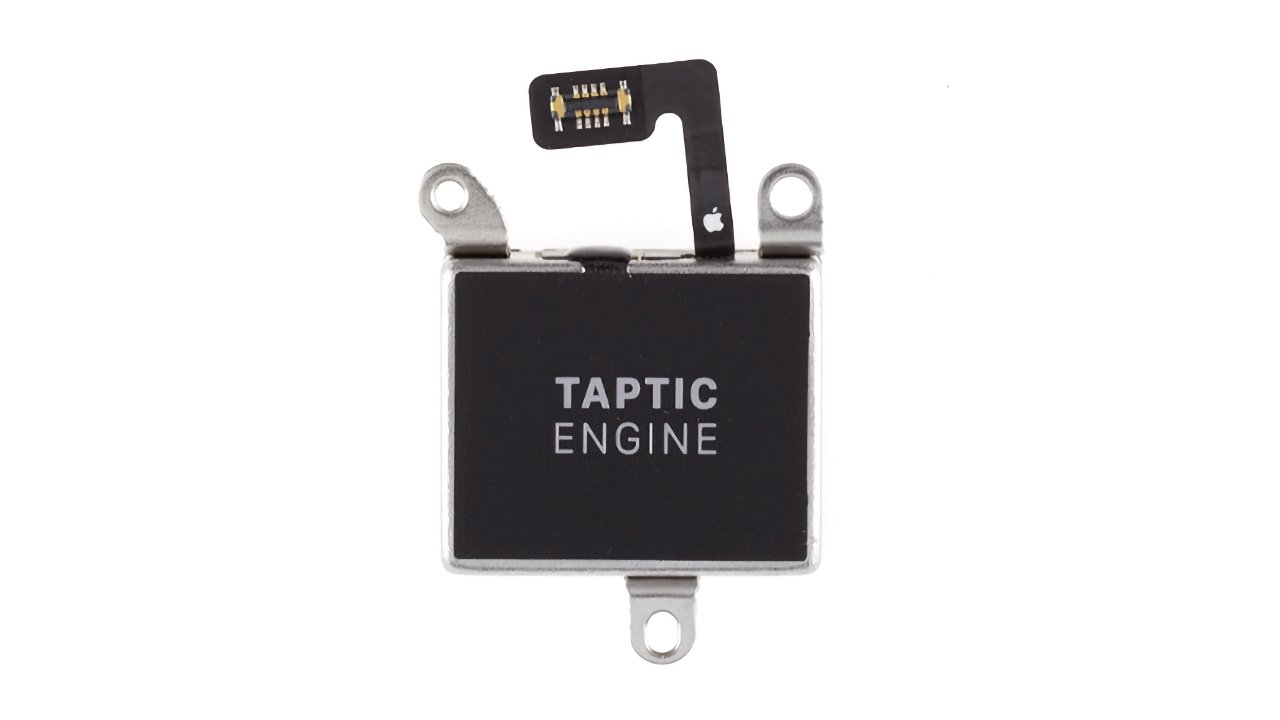Tech
Apple's Self Repair Program vs. Genius Bar: What it costs to fix an iPhone 13 – AppleInsider

AppleInsider is supported by its audience and may earn commission as an Amazon Associate and affiliate partner on qualifying purchases. These affiliate partnerships do not influence our editorial content.
iPhone users can repair their device in-home with certified tools provided by Apple, but it’ll cost you not just money, but time too. Here’s what you’ll spend trying to fix a broken iPhone 13.
Apple has finally opened up its Self Service Repair program where individuals can order genuine Apple parts and tools. Previously, a customer’s only options were Apple, an Apple Authorized Service Provider, or non-authorized repair centers.
The Self Service Repair Store is set up as a filtering tool so customers can select the exact device they’d like to repair and what repair is needed. There are six repair types for the iPhone 13: battery, bottom speaker, camera, display, SIM tray, and Taptic Engine.
Below, we’ll compare how much it will cost someone to repair an iPhone 13 themselves versus going to an Apple Authorized Service Provider. Out-of-warranty repairs will include the cost of parts and labor, while those who spend the $149 for AppleCare+ generally get massive discounts or free repairs.
In some cases, the Apple Store might be able to swap out a damaged part at a lower cost. The actual quoted cost of repair may vary between online, in-person, and third-party repair locations. The extent of damage to the device may also affect the repair price.
You’ll need to order any parts for the repair and can purchase any tools required for the job. Specific repair jobs have individual parts that can be ordered or bundles that don’t offer any savings, just convenience.
Customers who only need the repair tools for one job don’t have to spend the $1,000 it would cost to own them. Apple offers a tool rental kit for each device repair. The rental for one week costs $49, and Apple will place a temporary authorization on your credit card for the value of a full replacement of the tool kit.
For example, AppleInsider placed an order for the iPhone 13 Pro repair kit and the temporary authorization was $1,272. This amount will vary based on which tool kit is selected, as the iPhone SE repair kit doesn’t include as many tools.
Contents of the iPhone 13 tool kit
- Heated Display Removal Fixture
- Heated Display Pocket
- Battery Press
- Display Press
- 6.1-inch Repair Tray
- Adhesive Cutter
- Nylon Probe (Black Stick)
- Display Adhesive Press Plate
- Display Protective Cover
- Back Protective Cover
- Black Torque Driver Kit
- Gray Torque Driver
- Green Torque Driver
- Blue Torque Driver
- Micro Stix Bit
- Super screw Bit
Replacing an iPhone 13 battery
If a customer goes to an Apple Authorized Service Provider, a standard out-of-warranty battery replacement will cost $69 for the iPhone 13. AppleCare+ customers get the battery replacement for free, when performed at an Apple Store, by Apple technicians.
The Self Service Repair Program will cost $49 just to rent the necessary tools for the job plus the battery repair parts. Apple sells a bundle of parts for $70.99 and will give the customer a $24.15 return credit after giving Apple the old battery.
- Battery & screw kit = $69
- Security Screw (2 pieces) = $0.20
- Display Adhesive (2 pieces) = $1.80
The total cost of ordering the necessary parts, renting a tool kit, and then returning the old battery for a rebate is $95.84. The customer will need to perform the repair and then contact Apple to conduct a System Configuration to complete the repair.
If you already have the necessary tools to complete the job and don’t need to rent a kit, then the cost is only $46.84. Of course, this means you’d own $1,000 worth of equipment to complete the occasional repair with a version of the tools that Apple uses in-house instead of paying the company $69 to get it done by an official repair technician.
Replacing the iPhone 13 bottom speaker
Apple doesn’t provide detailed pricing for every repair, so that a bottom speaker repair may fall under the “Other Damage” category. Out-of-warranty repair would be $449, while AppleCare+ customers would pay $99.
The bundle of parts for an iPhone 13 bottom speaker replacement is $43.64. Again, add that to the cost of renting the tools needed for disassembling an iPhone 13.
- Bottom Speaker = $38.35
- Security Screw (2 Pieces) = $0.20
- Universal Screw Kit = $3.30
- Display Adhesive (2 pieces) = $1.80
The total cost for iPhone 13 bottom speaker self-repair would be $92.64, including the tool rental, and there is no rebate for this repair job.
Replacing the iPhone 13 camera
Apple doesn’t provide pricing for replacing an iPhone 13 camera at an authorized service center, but it may fall under the “other damage” category. So, out-of-warranty repair costs would be $449, and AppleCare+ customers would pay a $99 repair fee according to Apple’s support website.
The bundle of parts for an iPhone 13 camera replacement is $117.04. Apple offers a $52.50 rebate if the original camera module is returned.
- Camera = $111.75
- Security Screw (2 Pieces) = $0.20
- Universal Screw Kit = $3.30
- Display Adhesive (2 pieces) = $1.80
The total cost for iPhone 13 camera self-repair would be $113.54 after returning the original camera for a rebate and renting tools to do the job. Apple needs to be contacted after the repair is complete to perform a System Configuration and proper part serialization.
Replacing the iPhone 13 display
A cracked display is one of the most common problems an iPhone user can have. Out-of-warranty screen repair for the iPhone 13 is $279, and AppleCare+ customers pay $29.
The bundle of parts for an iPhone 13 display replacement is $269.95. Apple offers a $33.60 rebate if the original display is returned.
- Display and Screw Kit = $267.96
- Security Screw (2 Pieces) = $0.20
- Display Adhesive (2 pieces) = $1.80
The total cost for iPhone 13 display self-repair would be $285.35 after returning the original display and renting the tools from Apple. After the repair is complete, Apple will need to be contacted to perform a System Configuration.
Replacing the iPhone 13 Taptic Engine
Apple doesn’t break out the cost of Taptic Engine repair on its service website, so it may fall under the other damage category of repair. That means out-of-warranty repair could be $449, and AppleCare+ customers would pay $99.
The bundle of parts for an iPhone 13 Taptic Engine replacement is $43.64 with no chance for a rebate.
- Taptic Engine = $38.35
- Security Screw (2 Pieces) = $0.20
- Universal Screw Kit = $3.30
- Display Adhesive (2 pieces) = $1.80
The total cost for iPhone 13 Taptic Engine self-repair would be $92.64.
Replacement iPhone 13 SIM trays
If a SIM tray is lost or damaged, Apple will let customers order a replacement tray for $7.20 in the correct color. A SIM-eject tool is also available for purchase for $4.00.
Apple’s Self Service Repair Store versus Apple Authorized Service Provider
Apple urges customers with access to Apple Stores or authorized service centers to take advantage of the expert repair. The cost-benefit of doing so relies on multiple factors, including whether or not the customer has AppleCare+ or sufficient experience repairing electronics.
For a skilled few, self-repair is the best option since losing access to devices for days or weeks for mail-in repair may be impossible. Also, private entities will be able to offer non-authorized repair easier since tools and parts are easily sourced directly from Apple.
Importantly, if the self-repairer breaks the iPhone further during the repair process, the cost of any follow-on repairs are entirely the responsibility of the user. The iPhone interior is cramped, and there are many small pieces which can easily break, so we strongly recommend an honest self-assessment of skill level before the repair-at-home method is attempted.
Customers will need to weigh their options when deciding if they’d like to use Apple’s official channels or attempt a repair on their own. At least, with Apple’s Self Service Repair Program, there will be more options than ever.
Tech
Nothing Ear And Nothing Ear (a) Earbuds Are 1st With ChatGPT Integration – Forbes


London-based Nothing Tech has just launched new earbuds, two pairs, in fact. The Nothing Ear and more affordable Nothing Ear (a) have just gone on sale—you can read Forbes contributor Mark Sparrow’s review of both pairs here. And now, the company has announced a cool new feature: and industry-first integration with ChatGPT. It comes with strings, though.
The new earbuds have just been announced and are available to pre-order from nothing.tech now and go on sale from Monday, April 22. If you’re in London, and you want to be among the very first to get the earbuds, you can snap them up in the Nothing Store Soho a little bit sooner, from Saturday, April 20 (click-and-collect is available).
From launch, the company said, “it will enhance its overall user experience with industry-first ChatGPT integrations in its audio and smartphone products.”
Nothing goes on that it wants “to advance consumer tech products’ transition to AI, as well as simplify and enhance the user experience.”
It means users will be able to pinch the earbud to directly speak to ChatGPT to ask questions and hear responses in the earbuds. Nothing is also introducing new elements to Nothing phones, such as widgets which make it easy to talk to ChatGPT on the handsets. Other features include being able to send screenshots directly to ChatGPT and a clipboard shortcut for sending text.
So, what are the catches?
Although the Bluetooth new earbuds will work with any iPhone or Android phone, and there are dedicated Nothing apps for each platform, the ChatGPT integration is more limited for now.
function loadConnatixScript(document)
if (!window.cnxel)
window.cnxel = ;
window.cnxel.cmd = [];
var iframe = document.createElement(‘iframe’);
iframe.style.display = ‘none’;
iframe.onload = function()
var iframeDoc = iframe.contentWindow.document;
var script = iframeDoc.createElement(‘script’);
script.src = ‘//cd.elements.video/player.js’ + ‘?cid=’ + ’62cec241-7d09-4462-afc2-f72f8d8ef40a’;
script.setAttribute(‘defer’, ‘1’);
script.setAttribute(‘type’, ‘text/javascript’);
iframeDoc.body.appendChild(script);
;
document.head.appendChild(iframe);
loadConnatixScript(document);
(function()
function createUniqueId()
return ‘xxxxxxxx-xxxx-4xxx-yxxx-xxxxxxxxxxxx’.replace(/[xy]/g, function(c) 0x8);
return v.toString(16);
);
const randId = createUniqueId();
document.getElementsByClassName(‘fbs-cnx’)[0].setAttribute(‘id’, randId);
document.getElementById(randId).removeAttribute(‘class’);
(new Image()).src = ‘https://capi.elements.video/tr/si?token=’ + ’44f947fb-a5ce-41f1-a4fc-78dcf31c262a’ + ‘&cid=’ + ’62cec241-7d09-4462-afc2-f72f8d8ef40a’;
cnxel.cmd.push(function ()
cnxel(
playerId: ’44f947fb-a5ce-41f1-a4fc-78dcf31c262a’,
playlistId: ‘aff7f449-8e5d-4c43-8dca-16dfb7dc05b9’,
).render(randId);
);
)();
The earbuds must be paired with a Nothing handset. From today, the feature works with the premium model, the Nothing Phone (2), providing it’s running the latest software. The earlier Nothing Phone (1) and more recent, more affordable model, Nothing Phone (2a) will need to wait for a software update, which Nothing says is “coming soon”.
Also coming in the future is compatibility with earlier Nothing earbuds, that is the Ear (1), Ear (2) and Ear (Stick).
The new earbuds are very keenly priced. Ear costs $149 (£129 in the U.K.), while Ear (a) is $99 (£99 in the U.K.). Both pairs have active noise-cancelling, which is not commonplace at this price point. The more expensive Ear has a wireless charging case and a feature to create a personal sound profile. Both pairs come in black and white finishes, with Nothing’s trademark transparent design in the earbuds and charging case. But the Nothing Ear (a) has an eye-catching extra: a tremendous yellow-finish option.
Tech
U of T Engineering PhD student is working to improve the sustainable treatment of Ontario's drinking water – U of T Engineering News – U of T Engineering News


Growing up in a small neighbourhood in Cameroon, Maeva Che (CivMin PhD student) was aware of challenges of accessing clean drinking water.
“Experiencing that exposure to water issues and challenges with sustainable access to safe drinking water ignited my interest in water treatment,” Che says.
Che’s drive to improve water quality around the globe brought her to the Drinking Water Research Group (DWRG) at University of Toronto’s Faculty of Applied Science & Engineering, where she is researching innovative solutions to address local water issues.
Che is working under the supervision of Professor Ron Hofmann (CivMin), who is a member of the DWRG. Her research focuses on removing unpleasant taste and odour compounds in Ontario’s drinking water by promoting the biodegradation of these compounds through granular activated carbon (GAC) filtration.
The project is supported by a five-year Natural Sciences and Engineering Research Council of Canada (NSERC) Alliance grant called Advanced and Emerging Issues in Drinking Water Treatment.
GAC filtration is a water treatment process that uses granular activated carbon, which is made from organic materials that are high in carbon, such as wood, coal or coconut shells. These materials are heated in the absence of oxygen through a process known as pyrolysis and prompted chemically or physically to produce the activated carbon. The activation enhances the material’s adsorption properties, making it productive to remove contaminants from water.
While GAC filtration is an effective treatment process, its adsorptive capacity is limited. The adsorptive capacity of GAC is expected to become exhausted after about three years in service and drinking water treatment utilities must replace the GAC. Aside from the inconvenience, replacing GAC is costly.
Che is working on alternative ways to remove contaminants using GAC filtration, specifically through biodegradation. When the filtration has been in service for a while, there is the growth of micro-organisms on the GAC, which can be useful for removing contaminants.
“Think of biodegradation as the useful bacteria on the GAC feeding on the contaminants in the water, thereby removing them,” says Che.
“If the GAC has enough good bacteria that is biodegrading the compounds, the GAC may not need to be replaced when its adsorptive capacity becomes exhausted. This can extend the filter’s lifetime, resulting in cost benefits for treatment utilities.”
In other words, biodegradation can potentially enhance the performance of GAC filters.
Che and the DWRG will collaborate with water treatment plants to determine methods that can enhance the biodegradation of taste and odour compounds within their GAC filters.
Currently in its initial phase, the project is taking place alongside the Peterborough Utilities Group’s drinking water treatment plant, where Che is conducting pilot-scale filtration studies with support from the Peterborough Utilities Commission. They plan to extend this research to other partner treatment plants in the future.
Working with various water treatment plants across Ontario, Che will also assess the effectiveness of GAC filters in removing non-traditional taste and odour compounds, which are not commonly monitored.
To achieve this, she’ll evaluate filter performance for two common taste and odour compounds — 2-methylisoborneal and geosmin — and eight additional non-traditional compounds that can cause taste and odour events. This involves collecting GAC and water samples from the plants and conducting lab-scale filtration tests, called minicolumn tests. This test, developed by the DWRG, allows to differentiate between adsorption and biodegradation in GAC filters.
Minicolumn tests provide crucial insights into the performance of the GAC filters in terms of the adsorption and biodegradation of contaminants. To distinguish between these mechanisms, researchers use parallel minicolumns. One minicolumn operates under conditions where the biological activity of micro-organisms is suppressed, which isolates the adsorption process. The second minicolumn operates without biological suppression, allowing both adsorption and biodegradation to occur.
“Many plants are unaware of their filters’ performance for other compounds, aside from the two common ones, that also contribute to taste and odour events in water. Our project, therefore, plays a crucial role in expanding the understanding of this,” Che says.
Project partners include the Ajax Water Supply Plant and the Barrie Surface Water Treatment Plant.
The DWRG is made of approximately 30 graduate students, post-doctoral fellows, research managers and associates who collaborate with local, national and international industry and government organizations to address a wide range of projects related to municipal drinking water.
Che credits her experience as a master’s student with the research group as a major factor in her decision to pursue a PhD at the University of Toronto.
“During my master’s degree with the DWRG, I worked on projects that improved drinking water quality, gaining hands-on experience at treatment plants. Seeing the results of my research reinforced my decision to pursue my PhD here,” Che says.
Ultimately, Che hopes to make a significant impact in the field — and the DWRG provides opportunities to achieve this, with a supportive community of researchers and supervisors.
“My goal is to continue researching and developing sustainable solutions for drinking water treatment that benefit communities in need,” she says.
Tech
Huawei's latest flagship smartphone contains no world-shaking silicon surprises – The Register


When Huawei debuted its Mate 60 smartphone in mid-2023, it turned heads around the world after teardown artists found it contained a system-on-chip manufactured by Chinese chipmaker Semiconductor Manufacturing International Corporation (SMIC) using a 7nm process.
SMIC was thought not to be able to build that sort of thing. So while the Mate 60 didn’t differ markedly from every other modern smartphone, its very existence called into question the effectiveness of US-led efforts to prevent advanced chipmaking tech reach the Middle Kingdom.
Much speculation has therefore concerned what Huawei would deliver next, and this week the world got its answer – in the form of the Pura 70.
Chinese media report that early users of the device have posted details of its innards, naming the SoC as Kirin 9010 with four efficient cores running at 1.55GHz, half a dozen performance cores at 2.18GHz, and a couple of high-performance cores zipping along at 2.30GHz. All cores are Arm v8. A third-party spec sheet suggests it’s a 7nm chip – meaning Chinese chipmakers appear not to have made another unexpected advance.
Early tests suggest it outperforms the Kirin 9000 found in the Mate 60, but independent assessments are yet to emerge. The crowdsourced evaluations currently available are sometimes dubious.
What we can say with confidence is that the Pura 70 has a 6.6-inch OLED display with 120Hz refresh rate and resolution of 2,760 x 1,256. It has 12GB RAM aboard, and buyers can choose from 256GB, 512GB, or 1TB of storage.
The three rear-facing cameras on the base models can capture 50, 12, and 13 megapixels apiece.
The Pura range derives from Huawei’s P-Series handsets that stretched from the midrange to the low-end of premium, but are now focussed – pardon the pun – on photography enthusiasts. The device comes on four variants, each priced to match the four editions of Apple’s iPhone 15.
The screen on the high-end “Ultra” model grows to 6.8 inches and 2,844 × 1,260 pixels, with two rear cameras that shoot at 50 megapixels and one at 40. One of the 50MP snappers is retractable, to enhance its zooming powers.
Importantly, all models of the Pura 70 run HarmonyOS 4.2 – Huawei’s not-Android operating system.
China is all-in on HarmonyOS as the nation pursues indigenous alternatives to Western tech. In recent weeks Chinese media and government agencies have noted the growing proliferation of native HarmonyOS apps, trumpeting that developer enthusiasm for the platform means local buyers now have a more patriotic alternative.
That alternative appears to be welcome: after the debut of the Mate 60, analyst firm IDC saw Huawei’s smartphone market share improve by 36.2 percent. ®
-
Media8 hours ago
DJT Stock Rises. Trump Media CEO Alleges Potential Market Manipulation. – Barron's
-
Media10 hours ago
Trump Media alerts Nasdaq to potential market manipulation from 'naked' short selling of DJT stock – CNBC
-
Investment9 hours ago
Private equity gears up for potential National Football League investments – Financial Times
-



 Health22 hours ago
Health22 hours agoType 2 diabetes is not one-size-fits-all: Subtypes affect complications and treatment options – The Conversation
-
Media22 hours ago
DJT Stock Jumps. The Truth Social Owner Is Showing Stockholders How to Block Short Sellers. – Barron's
-
Business22 hours ago
Tofino, Pemberton among communities opting in to B.C.'s new short-term rental restrictions – Vancouver Sun
-
Art24 hours ago
Art in Bloom returns – CTV News Winnipeg
-
Business21 hours ago
A sunken boat dream has left a bad taste in this Tim Hortons customer's mouth – CBC.ca


